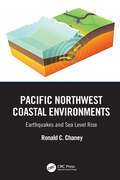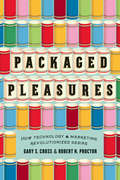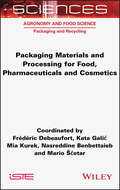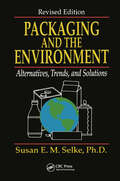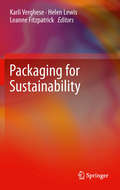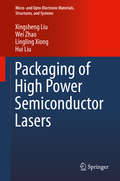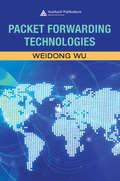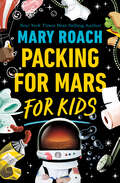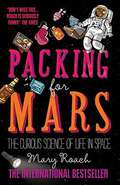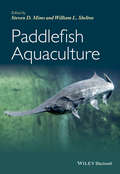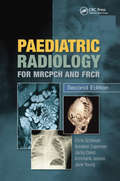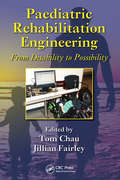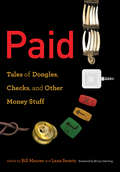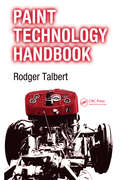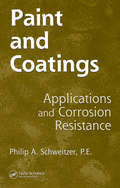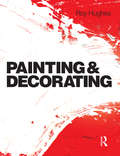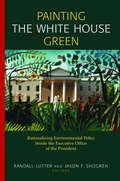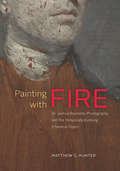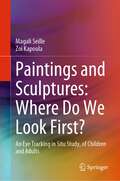- Table View
- List View
Pacific Crossing
by Elizabeth SinnDuring the nineteenth century tens of thousands of Chinese men and women crossed the Pacific to work, trade, and settle in California. Drawn initially by the gold rush, they took with them skills and goods and a view of the world which, though still Chinese, was transformed by their long journeys back and forth. They in turn transformed Hong Kong, their main point of embarkation, from a struggling infant colony into a prosperous international port and the cultural center of a far-ranging Chinese diaspora. Making use of extensive research in archives around the world, Pacific Crossing charts the rise of Chinese Gold Mountain firms engaged in all kinds of transpacific trade, especially the lucrative export of prepared opium and other luxury goods. Challenging the traditional view that the migration was primarily a "coolie trade," Elizabeth Sinn uncovers leadership and agency among the many Chinese who made the crossing. In presenting Hong Kong as an "in-between place" of repeated journeys and continuous movement, Sinn also offers a fresh view of the British colony and a new paradigm for migration studies.
Pacific Northwest Coastal Environments: Earthquakes and Sea Level Rise
by Ronald C. ChaneyPacific Northwest Coastal Environments: Earthquakes and Sea Level Rise investigates the potential impacts of changes in global sea level by examining historical sea and land levels, projected future levels, and by determining how those changes may affect future tides and storm surges to inform their potential to cause harmful impacts. This region has a unique interaction of land, sea, and tectonics. Climate and tectonic change can initiate issues ranging from an inundation of coastal areas due to a combination of sea level rise, vertical land movement, and potential tsunami. This combination of factors leads to the retreat of coastal shorelines due to erosion caused by both tidal action and wave runup. Specific topics explored in this book include the following: Coastal erosion rates along the Pacific Northwest coastline from Eureka, California to Vancouver Island, British Columbia. Sea cliff retreat mitigation techniques looking at both the advantages and disadvantages of the different techniques. Interaction between subduction zone earthquakes and vertical land movement. Wave characterization in both deep and shallow water. In addition, the book looks at both wave refraction and reflection along the coastline. Tides along the Pacific Northwest coastline and their role in calculating the relative sea level and its effect on coastal erosion.
Packaged Pleasures: How Technology & Marketing Revolutionized Desire
by Robert N. Proctor Gary S. CrossFrom the candy bar to the cigarette, records to roller coasters, a technological revolution during the last quarter of the nineteenth century precipitated a colossal shift in human consumption and sensual experience. Food, drink, and many other consumer goods came to be mass-produced, bottled, canned, condensed, and distilled, unleashing new and intensified surges of pleasure, delight, thrill--and addiction. In Packaged Pleasures, Gary S. Cross and Robert N. Proctor delve into an uncharted chapter of American history, shedding new light on the origins of modern consumer culture and how technologies have transformed human sensory experience. In the space of only a few decades, junk foods, cigarettes, movies, recorded sound, and thrill rides brought about a revolution in what it means to taste, smell, see, hear, and touch. New techniques of boxing, labeling, and tubing gave consumers virtually unlimited access to pleasures they could simply unwrap and enjoy. Manufacturers generated a seemingly endless stream of sugar-filled, high-fat foods that were delicious but detrimental to health. Mechanically rolled cigarettes entered the market and quickly addicted millions. And many other packaged pleasures dulled or displaced natural and social delights. Yet many of these same new technologies also offered convenient and effective medicines, unprecedented opportunities to enjoy music and the visual arts, and more hygienic, varied, and nutritious food and drink. For better or for worse, sensation became mechanized, commercialized, and, to a large extent, democratized by being made cheap and accessible. Cross and Proctor have delivered an ingeniously constructed history of consumerism and consumer technology that will make us all rethink some of our favorite things.
Packaging Appreciation for MSMEs
by Sola Somade Tunji AdegboyeThis is a packaging technology book written with utmost simplicity to acquaint the manufacturers of products (foods, drinks, general goods, etc.) within the MSME operators of the critical role of packaging in the successful marketing of their products. The role of packaging (containment, protection, preservation and sales) is discussed. The objective of the book is to enlighten the MSMEs on how to choose a packaging that works, that is, one that will protect and sell their products. Various options of packaging materials and their characteristics are discussed. Consequences of packaging failures and how to avoid them are contained in the book. It is a book that is recommended for all who have products to market within the MSME operators as well as non-packaging professionals who want to know about packaging. It is a good reference book for packaging professionals and students of packaging technology.
Packaging Logistics: Understanding and managing the economic and environmental impacts of packaging in supply chains
by Dr Henrik PålssonOrganizations now consider packaging as a critical issue. Effective and efficient packaging can improve the performance of companies and minimise their costs. Packaging Logistics examines all essential roles within an organization, from the purchasing of raw materials to the production and sale of finished products, as well as transport and distribution. It is important for practitioners and academics to understand the role of packaging along the supply chain and the different implications of an efficient product packaging system for successful management of operations.In Packaging Logistics, Henrik Pålsson covers essential hot topics such as sustainability, innovation, returns, e-commerce, end-of-life and future trends and challenges. This practical book takes the reader through every stage of packaging and relates it to supply chain and logistics, illustrated by over 30 case studies.
Packaging Materials and Processing for Food, Pharmaceuticals and Cosmetics
by Frederic Debeaufort Kata Galic Mia Kurek Nasreddine Benbettaieb Mario ScetarThis book provides valuable information on a range of food packaging topics. It serves as a source for students, professionals and packaging engineers who need to know more about the characteristics, applications and consequences of different packaging materials in food-packaging interactions. This book is divided into 13 chapters and focuses on the agro-food, cosmetics and pharmaceutical sectors. The first four chapters cover traditional packaging materials: wood, paper and cardboard, glass and metal. The next two deal, respectively, with plastics and laminates. Biobased materials are then covered, followed by a presentation of active and smart packaging. Some chapters are also dedicated to providing information on caps and closures as well as auxiliary materials. Different food packaging methods are presented, followed by an investigation into the design and labelling of packaging. The book ends with a chapter presenting information on how the choice of packaging material is dependent on the characteristics of the food products to be packaged.
Packaging and the Environment: Alternatives, Trends and Solutions
by Susan SelkeThe leading book on packaging and the environment-now expanded and updated This is a detailed examination and objective analysis of all aspects of environmental problems related to packaging: resource depletion, pollution, solid waste management, recycling, degradability, package design considerations, and legislation. The author is a leading authority on the subject. The presentation is well documented and non-partisan. This new edition is expanded and completely updated.
Packaging for Food Preservation
by Amalia Conte Matteo Alessandro Del NobileThe book will be focused on the three most important aspects of food packaging: Modeling, Materials and Packaging Strategies. The modeling section will provide a complete overview of mass transport phenomena in polymers intended for food packaging applications. The materials section will cover the most interesting problem-solving solutions in the field of food packaging, i.e., low environmental impact active films with antimicrobial activity. Lastly, the packaging section will provide an overview of the most recent approaches used to prolong the shelf life of several food products.
Packaging for Nonthermal Processing of Food (Institute of Food Technologists Series #28)
by Jung H. Han Melvin A. PascallA comprehensive review of the many new developments in the growing food processing and packaging field Revised and updated for the first time in a decade, this book discusses packaging implications for recent nonthermal processing technologies and mild food preservation such as high pressure processing, irradiation, pulsed electric fields, microwave sterilization, and other hurdle technologies. It reviews typical nonthermal processes, the characteristics of food products after nonthermal treatments, and packaging parameters to preserve the quality and enhance the safety of the products. In addition, the critical role played by packaging materials during the development of a new nonthermal processed product, and how the package is used to make the product attractive to consumers, is discussed. Packaging for Nonthermal Processing of Food, Second Edition provides up to date assessments of consumer attitudes to nonthermal processes and novel packaging (both in the U.S. and Europe). It offers a brand new chapter covering smart packaging, including thermal, microbial, chemical, and light sensing biosensors, radio frequency identification systems, and self-heating and cooling packaging. There is also a new chapter providing an overview of packaging laws and regulations in the United States and Europe. Covers the packaging types required for all major nonthermal technologies, including high pressure processing, pulsed electric field, irradiation, ohmic heating, and others Features a brand new chapter on smart packaging, including biosensors (thermal-, microbial-, chemical- and light-sensing), radio frequency identification systems, and self-heating and cooling packaging Additional chapters look at the current regulatory scene in the U.S. and Europe, as well as consumer attitudes to these novel technologies Editors and contributors bring a valuable mix of industry and research experience Packaging for Nonthermal Processing of Food, Second Edition offers many benefits to the food industry by providing practical information on the relationship between new processes and packaging materials, to academia as a source of fundamental knowledge about packaging science, and to regulatory agencies as an avenue for acquiring a deeper understanding of the packaging requirements for new processes.
Packaging for Sustainability
by Helen Lewis Leanne Fitzpatrick Karli VergheseThe packaging industry is under pressure from regulators, customers and other stakeholders to improve packaging's sustainability by reducing its environmental and societal impacts. This is a considerable challenge because of the complex interactions between products and their packaging, and the many roles that packaging plays in the supply chain. Packaging for Sustainability is a concise and readable handbook for practitioners who are trying to implement sustainability strategies for packaging. Industry case studies are used throughout the book to illustrate possible applications and scenarios. Packaging for Sustainability draws on the expertise of researchers and industry practitioners to provide information on business benefits, environmental issues and priorities, environmental evaluation tools, design for environment, marketing strategies, and challenges for the future.
Packaging of High Power Semiconductor Lasers
by Xingsheng Liu Wei Zhao Lingling Xiong Hui LiuThis book introduces high power semiconductor laser packaging design. The challenges of the design and various packaging and testing techniques are detailed by the authors. New technologies and current applications are described in detail.
Packet Forwarding Technologies
by Weidong WuAs Internet traffic continues to grow exponentially, there is a great need to build Internet protocol (IP) routers with high-speed and high-capacity packet networking capabilities. The first book to explore this subject, Packet Forwarding Technologies explains in depth packet forwarding concepts and implementation technologies. It covers the
Packing for Mars for Kids
by Mary Roach“America’s funniest science writer” (Washington Post) asks the questions children ask in this young readers adaptation of her best-selling Packing for Mars. What is it like to float weightlessly in the air? What happens if you vomit in your helmet during a spacewalk? How do astronauts go to the bathroom? Is it true that they don’t shower? Can farts really be deadly in space? Best-selling Mary Roach has the answers. In this whip-smart, funny, and informative young readers adaptation of her best-selling Packing for Mars, Roach guides us through the irresistibly strange, frequently gross, and awe-inspiring realm of space travel and life without gravity. From flying on NASA’s Weightless Wonder to eating space food, Packing for Mars for Kids is chock-full of firs-hand experiences and thorough research. Roach has crafted an authoritative and accessible book that is perfectly pitched to inquiring middle grade readers.
Packing for Mars: The Curious Science of Life in Space
by Mary RoachWhat happens when you vomit during a space walk? The bestselling author of Stiff explores the irresistibly strange universe of space travel and life without gravitySpace is devoid of the stuff humans need to live: air, gravity, hot showers, fresh veg, privacy, beer. How much can a person give up? What happens when you can't walk for a year? Is sex any fun in zero gravity? What's it like being cooped up in a metal box with a few people for months at a time? As Mary Roach discovers, it's possible to explore space without ever leaving Earth. From the space shuttle training toilet to a 17,000 mile-per-hour crash test of NASA's space capsule (cadaver stepping in), she takes us on a surreally entertaining trip into the science of living in space.
Paddlefish Aquaculture
by William L. Shelton Steven D. MimsPaddlefish have become of increasing interest to the aquaculture community in recent years, particularly as a potential new source of seafood and caviar. Native to North America, paddlefish show great promise both domestically and internationally as a commercially viable farmed species. Paddlefish Aquaculture examines all aspects of the biology and culture of these fish, exploring their physiology, production, end products and the economics underlying a successful paddlefish operation. Chapters specifically cover paddlefish biology, propagation and early culture techniques, production for meat and caviar, international culture and history, paddlefish food products, bioaccumulants of contaminants in paddlefish, parasites and diseases, and the economics of paddlefish aquaculture. Paddlefish Aquaculture is a timely practical reference for researchers and producers interested in paddlefish.
Paediatric Radiology for MRCPCH and FRCR, Second Edition
by Chris Schelvan; Annabel Copeman; Jacky Davis; Annmarie Jeanes; Jane YoungRadiology plays a fundamental role in the diagnosis and management of childhood diseases. This is reflected in both paediatric and radiology post graduate exams, where candidates are expected to have a working knowledge of paediatric pathology, clinical manifestations and appropriate radiological investigations. Building on the great success of the first edition, Paediatric Radiology for MRCPCH and FRCR retains the popular preexisting structure of the book, but presents an improved variety of clinical cases as well as updated text in-keeping with advances in medical practice and technology. There is more emphasis on cross-sectional imaging, as candidates are increasingly encountering these sophisticated imaging tests in postgraduate exams. Images have been updated, and all the clinical information has been reviewed and revised accordingly.Contains over 100 clinical cases, presented in exam format, with answers overleaf Includes a wide range of common and rare paediatric conditions with supplementary images to illustrate additional points Uses classic examination images, with salient radiological and clinical summaries of each condition - the "hot lists" Carries specific information for paediatricians and radiologists for each case An introductory chapter on the basic concepts of imaging aims to provide the reader with an approach to radiological imaging and an awareness of the different modalities available, with new sections on non-accidental injury and radiation protection.
Paediatric Rehabilitation Engineering: From Disability to Possibility (Rehabilitation Science in Practice Series)
by Tom Chau Jillian FairleyInnovations in paediatric rehabilitation engineering can serve as a springboard to education, psychosocial, social, physical and cognitive development for children and youth with disabilities. Instead of providing an overview of rehabilitation engineering, Paediatric Rehabilitation Engineering focuses on the uniqueness of the paediatric subspecialt
Pahl/Beitz Konstruktionslehre: Methoden und Anwendung erfolgreicher Produktentwicklung
by Kilian Gericke Beate BenderBewährt und international anerkannt: methodische Grundlagen als Voraussetzung erfolgreicher Produktentwicklung. Dieses Buch strafft die wissenschaftlichen Grundlagen und beschreibt Produktentwicklung anhand praktischer Beispiele. Mit neuen Lösungen zu Faserverbundbauweisen, Mecha- und Adaptronik; wirtschaftliche Realisierung durch Baureihen- und Baukastensysteme und vorausschauende Kostenbetrachtung; Qualitätssicherung mit wenig Aufwand und unter Einsatz der EDV. Neu in der 8. Auflage: Methoden zum Finden neuer Produktideen (auch ohne Push- und Pull-Ansatz), Product-Lifecycle-Management-Strategie (PLM), TRIZ, Produktdatenmanagement-Systeme.
Paid: Tales of Dongles, Checks, and Other Money Stuff (Infrastructures)
by Bill Maurer Lana SwartzStories about objects left in the wake of transactions, from cryptocurrencies to leaf-imprinted banknotes to records kept with knotted string.Museums are full of the coins, notes, beads, shells, stones, and other objects people have exchanged for millennia. But what about the debris, the things that allow a transaction to take place and are left in its wake? How would a museum go about curating our scrawls on electronic keypads, the receipts wadded in our wallets, that vast information infrastructure that runs the card networks? This book is a catalog for a museum exhibition that never happened. It offers a series of short essays, paired with striking images, on these often ephemeral, invisible, or unnoticed transactional objects—money stuff.Although we've been told for years that we're heading toward total cashlessness, payment is increasingly dependent on things. Consider, for example, the dongle, a clever gizmo that processes card payments by turning information from a card's magnetic stripe into audio information that can be read by a smart phone's headphone jack. Or dogecoin, a meme of a smiling, bewildered dog's interior monologue that fueled a virtual currency similar to Bitcoin. Or go further back and contemplate the paper currency printed with leaves by Benjamin Franklin to foil counterfeiters, or khipu, Incan records kept in knotted string.Paid's authors describe these payment-adjacent objects so engagingly that for a moment, financial leftovers seem more interesting than finance. Paid encourages us to take a moment to look at the nuts and bolts of our everyday transactions by looking at the stuff that surrounds them.ContributorsBernardo Bátiz-Lazo, Maria Bezaitis, Finn Brunton, Lynn H. Gamble, David Graeber, Jane I. Guyer, Keith Hart, Sarah Jeong, Alexandra Lippman, Julien Mailland, Scott Mainwaring, Bill Maurer, Taylor C. Nelms, Rachel O'Dwyer, Michael Palm, Lisa Servon, David L. Stearns, Bruce Sterling, Lana Swartz, Whitney Anne Trettien, Gary Urton
Paint Technology Handbook
by Rodger TalbertModern paints and coatings offer an astounding variety of formulations that are used to improve the durability, appearance, and lifespan of countless products. From cars to furniture, computers, and mechanical components, paints and coatings play a vital role in nearly every manufactured product available. Written by an industry insider with more than 30 years of experience, the Paint Technology Handbook provides a primary, one-stop resource for designing and operating optimal paint and surface finishing systems. The book examines system components and how surface preparation affects performance. It describes the chemical components of paints, relevant color theories, and analytical methods used for color matching and control. The book presents a complete evaluation of liquid paint application technologies, including spray and electrodeposition techniques. Concluding chapters cover curing, testing methods for finished materials, quality control techniques, and performing cost analyses.
Paint and Coatings: Applications and Corrosion Resistance (Corrosion Technology)
by P.E., Philip SchweitzerPaint and Coatings: Applications and Corrosion Resistance helps designers, engineers, and maintenance personnel choose the appropriate coatings to best protect equipment, structures, and various components from corrosion, degradation, and failure. The book addresses all factors - including physical and mechanical properties, workability, co
Painting and Decorating
by Roy HughesAssuming no prior experience of the trade, Roy Hughes details the underpinning knowledge of the materials, tools and techniques required for successful painting and decorating, and provides step-by-step guidance towards developing the essential skills required for anyone wishing to embark on a career in decorative occupations.The reader is guided through each of the key areas and processes in the field, with additional emphasis placed on Health & Safety. Written by the author of the CITB/City & Guilds Level 2 Technical Certificate, the book fully covers the syllabus requirements for the Intermediate Construction Award (painting and decorating route) and the Decorative Occupations NVQ at Level 2.Readers will find the topic Colour in Decoration – a critical aspect of actual painting and decorating practice – is also addressed, making this essential reading for Modern Apprentices in the trade, as well as serving as a useful reference for qualified painters and decorators.The book is designed to maximise accessibility of the text for the reader. Activities, key points, and ‘test your knowledge’ questions (for use during college/centre training), feature throughout the text to allow application of theory into practical contexts. An additional answer section at the back of the book aids self-assessment, enabling the reader to revise all key concepts that have been introduced.
Painting the White House Green: Rationalizing Environmental Policy Inside the Executive Office of the President
by Jason F. Shogren Randall LutterPresidents, like kings, lead cloistered lives. Protecting the president from too much isolation are advisers and aides who help ensure that the administration achieves its policy goals while enjoying broad political support. In economics and environmental policy, where disagreement among stakeholders and expert opinion is especially strong, the president needs good advice about political strategy, as well as unbiased information about the substance of policy issues. It is the latter need that the Council of Economic Advisers (CEA) is intended to address. Painting the White House Green collects personal essays by eight Senior Staff Economists for Environmental and Natural Resource Policy who worked within the CEA from 1992 to 2002. These authors confirm the council's 'severe' view of many environmental initiatives, a perspective that led President Clinton to label his economic advisers as 'lemon suckers.' At the same time, they demonstrate that the emphasis on efficiency was to offer more effective environmental protection at lower cost. Thinking 'green' meant thinking consistently about both economics and the environment. The essays in this innovative book present lively debates on clean air, climate change, and electricity deregulation that pitted economists at CEA, the Office of Management and Budget, and often the Treasury Department, against political advisers in the White House and officials at EPA and other agencies. The essays present vivid portraits of the power plays involved in environmental policymaking, rare insights into presidential decisionmaking, and revealing details of the ways that economic thinking influences-or is neglected-in a wide range of policy decisions.
Painting with Fire: Sir Joshua Reynolds, Photography, and the Temporally Evolving Chemical Object
by Matthew C. HunterPainting with Fire shows how experiments with chemicals known to change visibly over the course of time transformed British pictorial arts of the long eighteenth century—and how they can alter our conceptions of photography today. As early as the 1670s, experimental philosophers at the Royal Society of London had studied the visual effects of dynamic combustibles. By the 1770s, chemical volatility became central to the ambitious paintings of Sir Joshua Reynolds, premier portraitist and first president of Britain’s Royal Academy of Arts. Valued by some critics for changing in time (and thus, for prompting intellectual reflection on the nature of time), Reynolds’s unstable chemistry also prompted new techniques of chemical replication among Matthew Boulton, James Watt, and other leading industrialists. In turn, those replicas of chemically decaying academic paintings were rediscovered in the mid-nineteenth century and claimed as origin points in the history of photography. Tracing the long arc of chemically produced and reproduced art from the 1670s through the 1860s, the book reconsiders early photography by situating it in relationship to Reynolds’s replicated paintings and the literal engines of British industry. By following the chemicals, Painting with Fire remaps familiar stories about academic painting and pictorial experiment amid the industrialization of chemical knowledge.
Paintings and Sculptures: An Eye Tracking in Situ Study, of Children and Adults
by Magali Seille Zoi KapoulaThe book presents three studies in which eye tracking data were collected at the Musée des Beaux-Arts in Rouen in June and July 2013. Overall, the results of those three studies highlight the knowledge gained from the analysis of the very first saccade in a museum context, when people look at paintings and statues. The first study analyzes how viewers orient their first saccade on paintings. This study shows that, in a museum, the first saccade is attracted toward the center of paintings. This attraction toward the paintings’ center is found in all the subjects’ groups that we have studied. Noteworthily, this effect is significantly less pronounced in individuals who never visit museums. It is among amateurs, who often visit museums, that the center attracts the most the first saccade. Among experts, painters or art history teachers, and to a lesser extent among amateurs, the pictorial composition largely determines the orientation of the first saccade. We indeed found that, as soon as the first saccade, experts orient their gaze toward the main subject. This phenomenon seems to be explained by the fact that experts immediately orient their gaze (here measured as the first saccade) toward the paintings’ location conveying the most meaning. It can either be the center, or a peripheral area, depending on whether the paintings’ most meaningful subject is located centrally or peripherally. The second study shows that the center does not attract the first saccade in 5-year-old children. This behavior appears later, in 8- to 10-year-old children. However, noticeably, the 8–10-year-old children orient significantly less frequently their first saccade toward the paintings’ center as adults do, and this is also true when one considers non-expert adult viewers. The results of the third study focus on statues and reveal a very different oculomotor behavior: Indeed, rather than looking at the center, statues’ viewers exhibit a clear tendency to saccade first at the statues’ contours. This stands in contrast with the behavior that we observe with paintings. Our study concludes that statues trigger a specific oculomotor behavior. The latter appears to be mostly driven by the physical presence that stone bodies incarnate. The movement and the climax of this movement, that sculptors manage to convey, thus turn out to attract the gaze in a unique fashion. The book concludes that the first saccade is a powerful indicator of the oculomotor behavior that greatly improves our comprehension of the unique relationship between a viewer and artworks.

